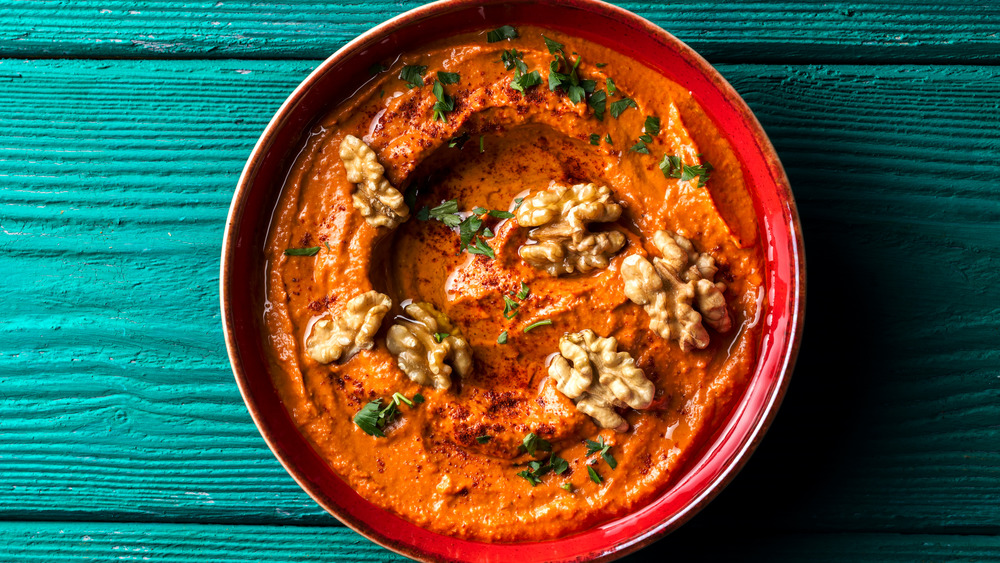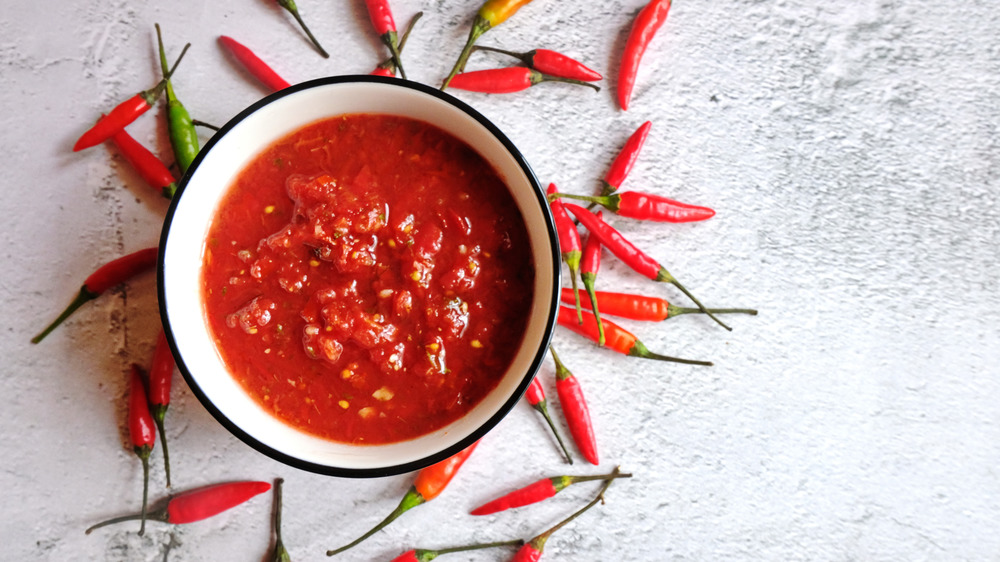This Is The Difference Between Muhammara And Harissa
As the world gets a little larger, more and more cuisines begin to step into the global spotlight. The migration of Italians to the United States brought over foods like pizza, pasta, and Parmigiano Reggiano. The migration of Asians brought over things like kimchi, curry, and sushi. And the migration of Middle Easterners introduced foods like hummus, za'atar, and labneh.
Recently, there has been a big push in the culinary world into the expansion of Middle Eastern cuisine (per Insider), ushering the way for more and more restaurants to take hold and build up a stronger following. Common foods within Middle Eastern culture aren't limited to things like hummus and za'atar. More and more restaurants are beginning to serve things like tabbouleh, halloumi, and baba ghanoush (via CNN). Other dishes on the roster are dishes like muhammara and harissa, which at first might seem similar, but are totally different (via the kitchn and Nomad Paradise).
Muhammara and harissa both red in color, but one is a dip and the other is a condiment
According to Nomad Paradise, muhammara is a roasted red pepper dip that is normally thick, with a creamy-like texture. The Mediterrean Dish explains that this Middle Eastern dip packs a lot of smokey and savory flavors and is often incorporated within a mezze platter. The kitchn reports that harissa is more of a chile pepper paste that packs a kick. Bon Appétit adds that, depending on who is making it, harissa's spice level can range anywhere from mild to very, very hot.
To make muhammara, Nomad Paradise says that you will need red peppers, walnuts, breadcrumbs, olive oil, garlic, salt, lemon juice, and pomegranate molasses. Another The Mediterrean Dish report relates that harissa requires dry red chiles, roasted red peppers, tomato paste, garlic, citrus juice, olive oil, and a blend of spices.
Something that the two have in common is that you can eat them with anything. Bon Appétit states that you can have harissa with eggs, in yogurt, and on vegetables. Muhammara, on the other hand, can be eaten with toast, kebabs, and grilled meats, per Nomad Paradise.

